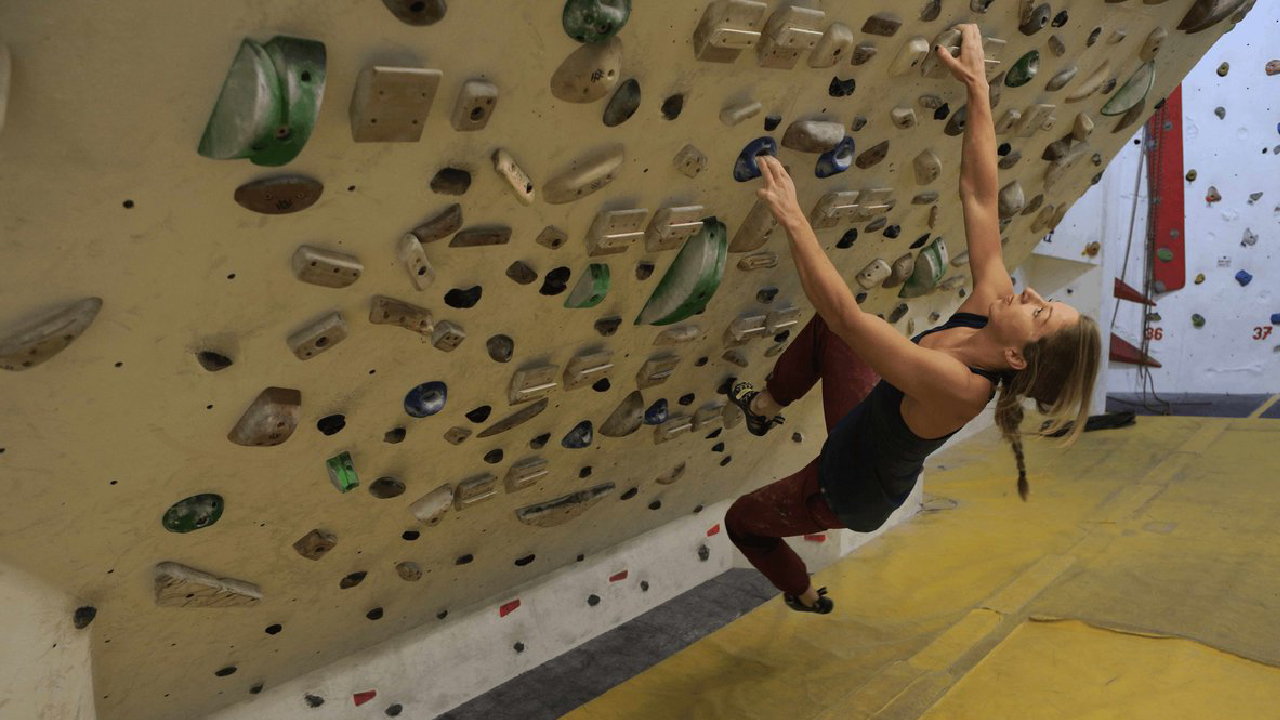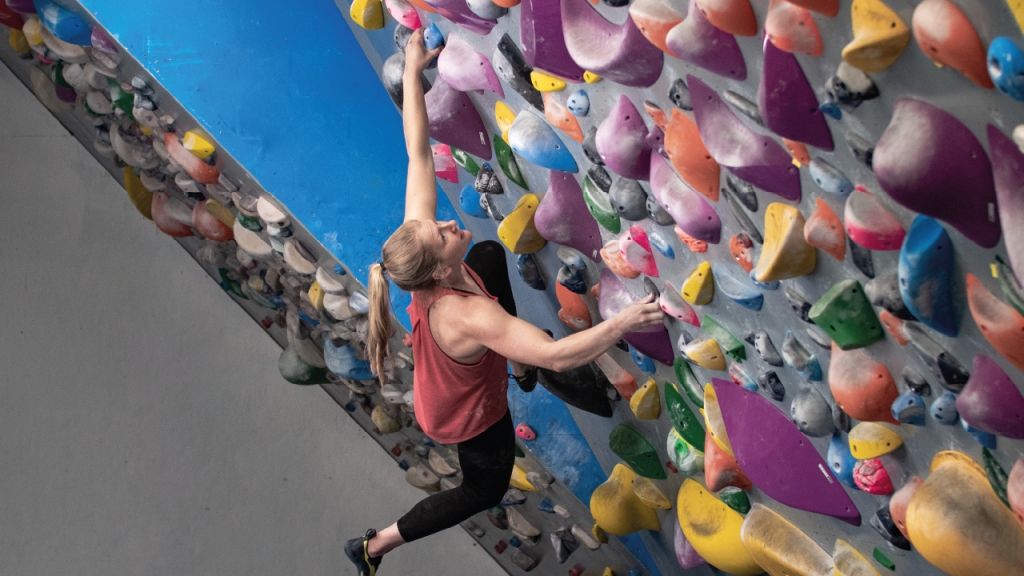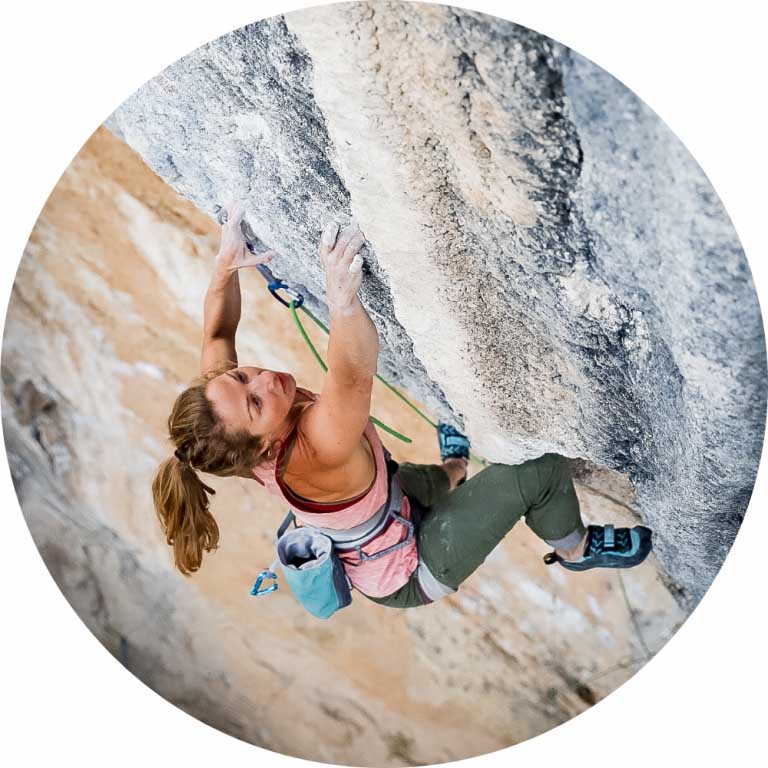Strength vs Power – What’s the difference and why does it matter?
Recently we compiled a post on instagram highlighting the differences between strength vs power in climbing and training. It is hard to go into depth in one post, so this article looks to expand on the topic.
Strength and power are not the same thing: they are two different physical capabilities. The confusion comes in as we often use these terms interchangeably in “everyday life”. That is the everyday life of a passionate climber who spends a lot of time at crags and gyms!. When we see a high end climbing performance, we may describe the climber as “strong” or “powerful”. We often do this without really distinguishing between the two attributes. Many route-focused climbers say they really need to work on their power for cruxes, when they may really mean strength.
When we invest time delving into training information, the first thing that is worth knowing is “why”. So, why is it useful to understand the difference between strength vs power? Both of these attributes are important and may play into our climbing performance. However, given the difference, the magnitude to which they are important will vary. Understanding strength and power allows us to be clear about what we want to develop. It allows us to lay out testing/monitoring methods that are appropriate and target the intended attributes in our training.
Although they are different, strength and power are inherently related (strength training plays a role in improving power performance). If you do want to improve both your strength and your power, it is not necessarily about doubling up your training to hit both areas. Instead it’s about applying a good thought process to what you train, and when you train it.

Strength vs power – what do these words mean?
As is often the case when we use words informally in climbing, between friends, at the crag, or in the pub, semantics becomes part of the problem. Therefore, taking a closer look at the definitions of strength and power is a good place to start.
Strength is the ability to exert force in order to overcome resistance to movement or resist unwanted movement. In climbing we want to resist and overcome the unwanted tug of gravity. The formula for force is:
Force = Mass x Acceleration
Work is related to force. This is the energy associated with moving an object with a given force. Work increases when a greater force is exerted or a greater distance is achieved.
Work = Force x Distance
Power is the rate of performing work (i.e. the rate at which a force can move an object). This is the ability to apply force with velocity (or speed if we are talking about travelling along a straight path).
Power = Work / Time
Or
Power = Force x Velocity
From these equations we can see that if an object moves a given distance in a shorter amount of time, the power is greater. Equally, if a force is exerted at a greater velocity, the power is greater. A common term used in sport performance when measuring power is the rate of force development (RFD). This is nice as it provides an explanation within the term itself.
Although these equations help us understand what strength and power are, it also makes it clear how distinguishing these two attributes within the world of climbing can be tricky. Both strength and power include force. However, strength focuses on the ability to exert force to overcome the greatest resistance possible. Whereas power focuses on the ability to exert force at a high velocity.
With these equations in place we can start to see how two different climbers could perform differently when it comes to strength vs power. In climbing two climbers could complete the same climb, but use different attributes to achieve it. The relationship between force and power helps illustrate that. A climber’s physical profile with respect to strength vs power will be the combination of a number of factors. These include; genetics/ morphology, climbing history, training history and climbing style.
How can we assess strength and power in climbing?
In climbing there are a number of performance metrics that are now well established, both in research and practice. These metrics help us to identify physical attributes that play into climbing performance and help define tests to assess and monitor when we are training. Unsurprisingly these include tests for strength and power (amongst other things!). These physical assessments help us to understand what strength and power are in a climbing context and allow us to extrapolate our understanding out into more complex situations.
Strength
When it comes to strength, we now know we are interested in the force we can exert. In climbing the upper body and finger flexors are two of the standout areas. The 2RM pull up and 7 second max hang tests are two common tests for strength. The performance in these tests does not rely on velocity, only force. So the 2RM pull up test may look very slow as the climber works to exert a high amount of force. In fact if the pull up is performed quickly, you know it isn’t your 2RM!
Strength testing does not have a “race” element. If you set up a test where you had to push a weight from A to B, completion would earn you a win. When it comes to a 2RM pull up test it doesn’t matter if it takes you 5 or 8 seconds to complete a pull up, as long as you move the weight all the way to the bar. If we complete a strength based test before and after a training intervention, if the weight has increased, then we know that the intervention has been successful.
Power
Power is a bit harder to measure due to the velocity element. Velocity may seem a bit abstract when we think about climbing. But looking at how power is assessed helps make this clearer. The greater the velocity, the greater the distance an object moves in a given space of time. Therefore, measuring distance in a power slap test is one way of assessing and monitoring upper body power for climbing. For the finger flexors we can use force plates to measure the rate of force development (RFD). We can see how much force we can exert in a given time (often 200 ms) or the amount of time it takes us to reach a given percentage of our maximum force (e.g. 80%). However, the equipment here is not as readily available.
Measurements alone don’t tell us everything we need to know. If you complete these tests, it is then useful to compare your results to climbers of a similar level, who climb in the same style you wish to perform in or have successfully climbed projects you are interested in. This helps us to identify strengths and deficits in a goal specific manner. This, alongside a good assessment of the demands of your goals, will help you understand whether it is strength or power that you need to work on.
A few questions to consider
- Do you find you can make long moves easily in climbing, but struggle to control difficult static movements? This could mean that strength training would be beneficial.
- Do you find if you pull on off a rope/ half way through a sequence that you can hold the holds, but you can’t catch them when moving to them dynamically? This could mean that RFD in the fingers could be improved.
- How quickly do you move on climbing of varying levels of difficulty for you? Power can be useful for efficiency on a range of levels. Moving through climbs more slowly may indicate a greater reliance on strength and power development may help performance..
- How does the extension from your lower body look when climbing powerful problems? Although the upper body is important, we apply a lot of strength and power from our lower body, especially for long moves.
- What style of climbing best suits your goal? Would speeding up or slowing down the movement be better? Improving strength means we can control movements which can be beneficial for precision.

How do we train these attributes?
So what’s the difference in training strength vs power?
Training strength involves trying to increase the force that you can exert. Therefore, we tend to be operating from around 85% of max and above. In order to progress we need to gradually increase the force, complete the exercise consistently enough and allow adequate rest in between. Any strength based movement should be high in intensity, such that the movements are completed relatively slowly. Some common examples for climbing strength are;
Fingers – 5 to 10 second hangs on a fingerboard with gradual, incremental addition of weight.
Upper body – Weighted pull ups ranging from 3 to 6 repetitions.
Lower body – Squats or deadlifts ranging from 3 to 6 repetitions.
** When it comes to rep ranges for developing strength there are a range of possibilities, but they must be high intensity such that they feel difficult to complete.
As we have seen, force plays into both strength and power. This is where the concept of strength acting as a foundation for power has come from. There are even studies showing that strength training alone improves strength and power. This is why strength training is completed in cycles before power and why continuing to build strength is key if we want to develop power long term.
If strength training movements are slow and heavy, it follows logically that power training movements should be fast and light. It is commonly stated that around 40% of 1 RM targets power, though in reality there is a whole spectrum of intensities we could train power at, as long as the focus is on velocity. In this way training power relies heavily on the intention in the session. Some common examples for power training are;
Fingers – Campus board training where the rung size is challenging or “jump to holds” exercises where we focus on contact strength on a board.
Upper body – Assisted/bodyweight pull ups focusing on speed on the concentric part of the movement or campus board training focusing on distance between rungs.
Lower body – Counter movement jumps or power squats (using an intensity that allows speed to be the emphasis on the “up”)
Campus board training is commonly thought of as power training, but in reality this could sit at different points along the strength-power spectrum depending on the intensity of a campus move for a given climber. This generally depends on what intensity “bodyweight” is for a given climber (the closer a climber’s strength limit is to bodyweight the more strength based and the less power based a bodyweight campus move will be). This does not mean that campus training isn’t still an effective form of training for climbers of different strength levels, but it does mean that if power is the sole target of training for climbers with a lower strength level assisted power pull ups will allow a greater emphasis on speed.
Similarly to strength training (and any training!), we want to gradually increase the difficulty of the exercise. This can be done by increasing the difficulty whilst maintaining the velocity e.g. reducing the level of assistance in power pull ups, whilst maintaining the high velocity intention, or keeping the difficulty the same but increasing the velocity e.g. using set rungs on the campus board but covering a greater distance. Studies have shown that good gains in power can be achieved in 4-5 week training blocks which suggests a high neural component to the adaptation, rather than structural. This is also why it is important to cycle back to strength training to continue to progress in power performance.
To learn more about how to periodise strength and power training, head to our Lattice Insights Blog Post on Power.






